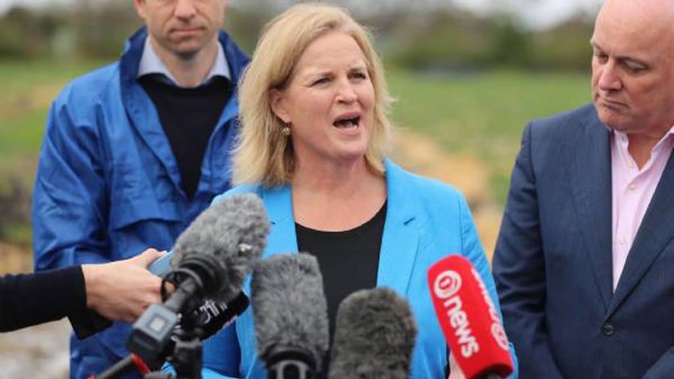
Officials have warned the Government the number of children living in poverty will likely increase by 7000 in four years as a result of benefit changes being rushed through Parliament.
One estimate warns that as many as 13,000 extra children will be in poverty by 2028 thanks to the Government’s changes.
The former government made changes to the way benefit rates are calculated each year. Previously, they were increased in line with CPI inflation, which meant beneficiaries’ incomes tended to fall behind those of other households, whose incomes rise with wages, which historically rise raster than CPI.
The 2019 Budget included a change that meant benefits must now rise with wage growth each year, unless the Government decides to make one-off increases above that rate.
The new Government plans to go back to the old system, which will see benefit rates grow at a slower rate overall.
A supplementary analysis report - a term for a regulatory impact statement prepared in a hurry - showed officials had modelled some of the impacts of the changes.
Over the next four years, the switch will save the Crown $669.5 million, but it will mean far lower benefit rates, particularly towards the end of the forecast period.
On current forecasts, this would mean someone on a jobseeker benefit would be $18.15 a week worse off under the changes by 2028, a person on single parent support would be $25 a week worse off. Someone on a supported living payment, received by people who are disabled or caring for disabled people would be $35.11 a week worse-off.
However, these figures are based on underlying assumptions from HYEFU that have since been updated. During the bill’s Committee Stage, the Government confirmed that the coming year’s adjustment would come in lower than if the adjustment had taken place under the old system. It means the disparity between the two methods of calculation will be even greater than presented in the report.
The changes were campaigned on by National at the election and are being passed under urgency this week. Act’s pre-election fiscal plan envisaged keeping the former government’s benefit calculation the same.
- MSD warns incoming minister of rising number of Kiwis on benefit, more increases likely
- National’s ‘show me the money’ moment: Benefit cuts to drive surplus, lower debt
“Disabled people and people with health conditions will be affected by a change in indexation settings,” officials said.
The officials said the changes may encourage “work-ready” beneficiaries to enter the workforce, however.
The analysis warned the changes would have a serious impact on child poverty if the Government doesn’t make other changes to lift the incomes of benefit households.
“In isolation, indexing main benefits to inflation may impact progress toward child poverty reduction targets. Preliminary modelling ... shows that indexing main benefits to inflation leads to an estimated increase in the number of children in poverty under the ACH50 and BHC50 poverty measures,” officials warned, referring to two measures of poverty.
ACH50 and BHC50 stand for After Housing Costs and Before Housing Costs. ACH50 is the number of children in households with incomes much lower (50 per cent) than a typical 2018 household. BCH50 is the number of households that have less than 50 per cent of the median equivalised disposable household income before housing costs. Some of our child poverty targets are assessed against these measures.
The officials warned that under the ACH50 the number of children in poverty would increase by 7000, although the increase could be as low as 3000 and as high as 11,000. Under the BCH50 measure the increase would also be 7000, but this figure has a much larger variance, meaning it could be as low as 1000 or as high as 13,000.
Labour’s social development spokeswoman and the former minister, Carmel Sepuloni, pressed the new Social Development Minister Louise Upston on whether she had seen the child poverty modelling before signing off on the decision.
Upston was reluctant to answer at first, but eventually confirmed that she had received the advice.
“The one individual piece of legislation that is before the Parliament at the moment, the figure [relating to the number of children in poverty] is 7000. Our Government is absolutely focused on reducing the number of children in living poverty and one of the areas we will focus on is reducing the number of children in benefit dependent homes that blew-out under the previous government,” Upston said.
Thomas Coughlan is Deputy Political Editor and covers politics from Parliament. He has worked for the Herald since 2021 and has worked in the press gallery since 2018.
Take your Radio, Podcasts and Music with you









